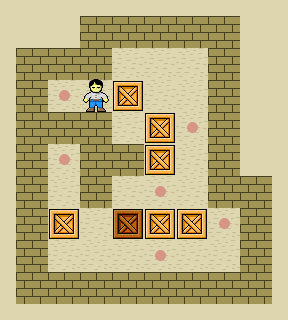
Sokoban is a puzzle video game in which the player pushes boxes around in a warehouse, trying to get them to storage locations. The game was designed in 1981 by Hiroyuki Imabayashi, and first published in December 1982.

Pac-Attack, also known as Pac-Panic, is a 1993 falling-tile puzzle video game developed and published by Namco for the Super Nintendo Entertainment System and Sega Genesis. Versions for the Game Boy, Game Gear and Philips CD-i were also released. The player is tasked with clearing out blocks and ghosts without them stacking to the top of the playfield — blocks can be cleared by matching them in horizontal rows, while ghosts can be cleared by placing down a Pac-Man piece that can eat them. It is the first game in the Pac-Man series to be released exclusively for home platforms.

The Tower of Druaga is a 1984 arcade action role-playing maze game developed and published in Japan by Namco. Controlling the golden-armored knight Gilgamesh, the player is tasked with scaling 60 floors of the titular tower in an effort to rescue the maiden Ki from Druaga, a demon with eight arms and four legs, who plans to use an artifact known as the Blue Crystal Rod to enslave all of mankind. It ran on the Namco Super Pac-Man arcade hardware, modified with a horizontal-scrolling video system used in Mappy.

The Quest of Ki is a 1988 video game developed by Game Studio and published by Namco for the Family Computer. It is the third game in Babylonian Castle Saga series which started with the 1984 arcade game, The Tower of Druaga.
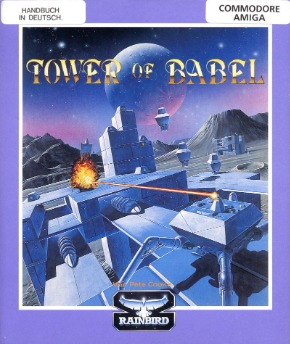
Tower of Babel is a computer game for the Amiga, Atari ST and Acorn Archimedes systems programmed by Pete Cooke, developed by Rainbird Software and released by Microprose Software in 1989. It is a puzzle video game played on a three-dimensional tower-like grid viewed in vector graphics with filled polygons.

Dragon Quest Swords: The Masked Queen and the Tower of Mirrors is a role-playing video game developed by Genius Sonority and Eighting and published by Square Enix for the Wii game console. The game is a spin-off from the Dragon Quest series, and was first released in Japan in July 2007, and worldwide the following year.

Pac-In-Time is a platform game developed by Atreid Concept featuring the arcade character Pac-Man. It was released in 1995 for MS-DOS, Macintosh, Super Nintendo Entertainment System, and Game Boy.
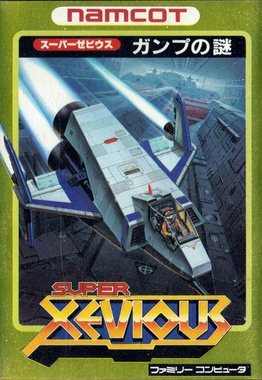
Super Xevious: GAMP no Nazo is a 1986 vertically scrolling shooter video game developed and published by Namco for the Family Computer in Japan. It is the sequel to Xevious, a popular arcade game released in late 1982, and the fourth installment in the Xevious franchise overall. The player controls a spaceship named the Solvalou in its mission to destroy a powerful supercomputer named GAMP, which took over Earth during an ice age. GAMP no Nazo features a heavy focus on puzzle-solving, with each of the game's 21 levels posing a puzzle that must be solved to progress.
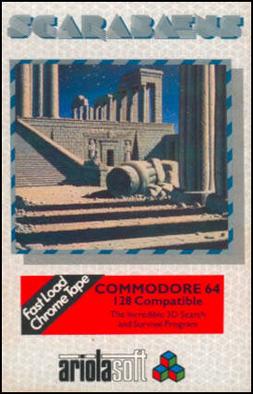
Scarabaeus, known in America as Invaders of the Lost Tomb, is a computer game released for the Commodore 64 in 1985. It was written in Hungary by Andromeda Software and distributed in the UK by Ariolasoft. The storyline features an astronaut and his dog who explore an Egyptian tomb and need to find the Pharaoh's Jewel by solving puzzles spread over three levels. The game is played in first-person view. A sequel was said to be in development in 1986 but was never released.
Professor Layton is a puzzle adventure video game series and transmedia franchise developed by Level-5. The property consists primarily of seven main video games, a mobile spin-off, an animated theatrical film, and an anime television series, while additionally incorporating an array of secondary titles and media, including a crossover game with Capcom's Ace Attorney series.
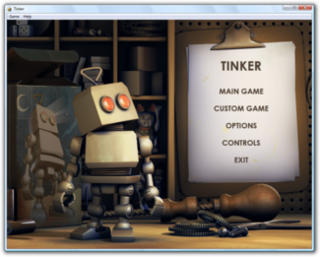
Tinker, also known as Microsoft Tinker, is a puzzle video game developed by Fuel Industries in which the player controls a robot through various mazes and obstacle courses. It was originally released on September 23, 2008, as part of Windows Ultimate Extras, and contained 60 levels, including a 20-level tutorial. A free map editor was also released; however, it is not compatible with the Games for Windows – Live version of Tinker. It is only compatible with the Windows Ultimate Extras version.

Professor Heinz Wolff's Gravity is a puzzle video game released on Wii, DS, Windows, iOS, and Android formats. It is published by Deep Silver and developed by Extra Mile Studios. The game is named after Heinz Wolff, while the iOS and Android versions are named after Isaac Newton.
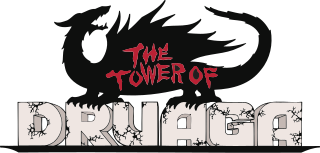
The Babylonian Castle Saga is a Japanese role-playing video game franchise developed and published by Bandai Namco Entertainment, formerly Namco, for arcades and home video game platforms. Beginning in 1984 with the arcade title The Tower of Druaga, the series would spawn a total of nine sequel and spin-off games, alongside a manga, soundtrack albums, and two anime series by Gonzo K.K. Later entries in the series would be developed by Endo's personal game company, Game Studio.

Professor Layton and the Miracle Mask is a puzzle adventure video game developed by Level-5. It is the fifth game in the Professor Layton series, the second in the prequel trilogy of games, and the first in the series to be developed for the Nintendo 3DS. Miracle Mask was released as a launch title for the Nintendo 3DS in Japan in February 2011, becoming the best-selling game on the day of the system's launch. The game was later released worldwide in October 2012. Professor Layton and the Miracle Mask Plus, an enhanced edition featuring new puzzles and added cutscenes, was released on the Nintendo eShop in Japan in February 2013.
Let's! TV Play Classic is a series of Japan-only plug & play devices developed and distributed by Bandai programmed on XaviX software created by SSD Company Limited in 2006 that contain arcade games from either Namco or Taito, with Namco's being called "Namco Nostalgia" while Taito's are called "Taito Nostalgia". Each device in the series contains 4 games, with 2 being classic arcade games while the other 2 are new games using the original game's sprites developed by Bandai.

Mr. Driller 2 is a puzzle video game developed and published by Namco, and the second game in the Mr. Driller series. It was released for the arcades in 2000, and was ported to the Game Boy Advance and Windows in 2001, and is available in emulated form via the Virtual Console on the Wii U. The game introduces two new characters to the series, Puchi, and Anna.

Cosmo Gang the Puzzle is a 1992 falling block puzzle arcade video game developed and published by Namco worldwide. The third game in its Cosmo Gang series, succeeding that year's Cosmo Gang the Video, players stack groups of blocks and aliens known as Jammers in a vertical-oriented well. The objective is to clear as many objects on the screen before they reach the top of the screen. Blocks are cleared by aligning them into complete horizontal rows, while Jammers are cleared by defeating them with blue-colored spheres.

Sailor Moon Drops was a match-three puzzle video game developed by Beeline Interactive and published by Bandai Namco Entertainment for iOS and Android devices. It based upon Naoko Takeuchi's Sailor Moon franchise, closely following the plot of its first anime adaptation. In the game, the player must match three of more pieces of the same color and form in order to complete a level. The game has been shut down internationally after March 28, 2019.

The first season of The Challenge: USA premiered on CBS on July 6, 2022. The season featured twenty-eight cast members from Big Brother, Love Island, Survivor, and The Amazing Race competing for a monetary prize.

The Challenge: Ride or Dies is the thirty-eighth season of the MTV reality competition series The Challenge, featuring alumni from The Real World, Road Rules, The Challenge, Are You the One?, Big Brother, Ex on the Beach, Survivor, Love Island, Ultimate Beastmaster, Prince Charming, The Mole Germany, Beauty & The Nerd and Exatlón Estados Unidos competing for a share at a $1 million prize. The season premiered on October 12, 2022, preceded by a launch special titled "Ready to Ride" which aired on October 10, 2022.


















